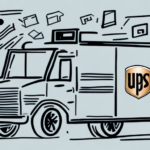What is UPS Insurance and Why It's Essential for Valuable Shipments
UPS insurance, also known as UPS Declared Value Protection, is an optional service that provides coverage in the event that your shipment is lost or damaged during transit. This service is particularly crucial when shipping high-value items, ensuring that you are financially protected beyond the standard carrier liability. Unlike the carrier’s automatic liability coverage, which typically covers up to a limited amount, UPS insurance allows you to declare the full value of your shipment and receive compensation accordingly. According to the UPS official policy, this additional protection ensures that your valuable items are safeguarded throughout the shipping process.
Factors Influencing the Cost of UPS Insurance
The cost of UPS insurance for a high-value shipment is determined by several key factors:
- Declared Value: The total amount of coverage you declare for your shipment directly impacts the insurance cost. Higher declared values result in higher insurance premiums.
- Destination: Shipping to international destinations may incur higher insurance costs due to increased risks and transportation challenges.
- Shipping Method: Faster shipping options, such as overnight delivery, typically come with higher insurance costs compared to standard ground shipping.
- Nature of the Items: The type of goods being shipped—such as perishable items, electronics, or fragile items—can affect insurance costs. Items that require additional handling or packaging may incur higher premiums.
- Security Measures: Shipments requiring enhanced security, such as GPS tracking or additional protective measures, can increase insurance costs but provide added protection.
Calculating the Cost of UPS Insurance for Your Shipment
To determine the exact cost of UPS insurance for your $3,000 shipment, you need to consider the UPS insurance rate structure. Typically, UPS charges a base rate plus an additional fee per $100 of declared value. For instance, as of 2023 rates from UPS, the standard insurance rate might include a base fee of $35 plus $2.50 for every $100 declared. Therefore, for a $3,000 shipment:
- Base Rate: $35.00
- Declared Value Fee: $2.50 x (3000 / 100) = $75.00
- Total Insurance Cost: $35.00 + $75.00 = $110.00
It's important to note that actual rates may vary, and it's advisable to consult the UPS insurance rate guide or contact UPS directly for the most accurate and up-to-date pricing information.
Comparing UPS Insurance with Other Shipping Insurance Options
While UPS offers comprehensive insurance options, it's essential to compare these with other carriers and third-party insurers to ensure you're getting the best coverage at a competitive price. Major carriers like FedEx and USPS also provide shipping insurance, each with their own rate structures and coverage terms. Additionally, third-party insurance providers specialize in shipping protection and may offer more flexible or cost-effective options. According to a 2023 study by Statista, evaluating the coverage limits, claims processes, and customer satisfaction ratings can help you make an informed decision.
Strategies to Reduce UPS Insurance Costs for Expensive Shipments
If you're looking to minimize the cost of UPS insurance for high-value shipments, consider the following strategies:
- Accurate Valuation: Only declare the value that is necessary. Overdeclaring can lead to unnecessarily high premiums.
- Choose Slower Shipping Methods: Opting for standard shipping can reduce insurance costs compared to expedited services.
- Enhance Packaging: Proper packaging reduces the risk of damage, potentially lowering insurance premiums and minimizing the need to file claims.
- Negotiate Rates: If you regularly ship high-value items, negotiating insurance rates with UPS can lead to bulk discounts.
- Explore Third-Party Insurers: Compare rates with third-party insurance providers who may offer more competitive pricing for similar coverage.
Additionally, bundling insurance with other services or leveraging business accounts can result in cost savings.
Filing a UPS Insurance Claim for Lost or Damaged Shipments
In the unfortunate event that your shipment is lost or damaged, filing a UPS insurance claim is a straightforward process. To ensure a smooth claim process, follow these steps:
- Gather Documentation: Collect all necessary documentation, including the tracking number, proof of value (such as receipts or appraisals), and evidence of damage (photos of the package and contents).
- Submit the Claim Promptly: UPS requires that claims be filed within a specific timeframe after the delivery date, typically within 60 days.
- Complete the Claim Form: Fill out the UPS claim form accurately, providing all requested information to facilitate prompt processing.
- Follow Up: Monitor the status of your claim through UPS's online portal or customer service to ensure timely resolution.
Understanding that UPS insurance covers only the declared value, it's crucial to ensure that the full value is declared to receive appropriate compensation. Refer to the UPS claims policy for detailed information on eligibility and required documentation.
Avoiding Common Mistakes When Purchasing UPS Insurance
To maximize the benefits of UPS insurance and prevent potential issues, avoid these common mistakes:
- Under- or Over-Declaring Value: Accurately declare the value of your shipment. Under-declaring can leave you undercompensated, while over-declaring unnecessarily increases insurance costs.
- Poor Packaging: Inadequate packaging can lead to damage and void insurance claims. Use strong materials and proper cushioning to protect your items.
- Missing Deadlines: Failing to file claims within the stipulated timeframe can result in denied compensation. Keep track of claim submission deadlines.
- Not Understanding Coverage Limits: Be aware of the coverage limits and exclusions of your insurance policy to ensure it meets your needs.
By paying attention to these factors, you can ensure that your valuable shipments are adequately protected and that any claims are handled efficiently.
Key Considerations When Choosing a Shipping Carrier’s Insurance Policy
When selecting a shipping carrier's insurance policy, it's important to consider several factors to ensure that your valuable items are adequately protected:
- Coverage Amount: Ensure that the policy covers the full value of your shipment, including any specific requirements based on the item's nature.
- Cost of Insurance: Compare rates across different carriers and insurance providers to find the most cost-effective option without compromising coverage.
- Claims Process: Evaluate the efficiency and responsiveness of the carrier’s claims process. A streamlined process can save time and reduce stress in the event of a claim.
- Reputation and Reviews: Research customer feedback and the carrier's reputation for handling claims to gauge reliability and customer satisfaction.
- Additional Services: Consider any added services, such as advanced tracking, security measures, or expedited claim handling, that may enhance the overall value of the insurance policy.
Furthermore, review the fine print of the insurance policy to understand exclusions, deductibles, and other critical terms. For comprehensive information, refer to the UPS insurance policy details.
By thoroughly understanding the cost and benefits of UPS insurance for a $3,000 shipment, as well as the factors influencing insurance costs, you can make informed decisions to protect your valuable items during transit. Carefully assess your insurance options, implement effective shipping strategies, and ensure adherence to policy requirements to safeguard your shipments and minimize risks.
Additionally, it's important to note that UPS insurance policies have limits on the amount of coverage they provide. For example, the maximum coverage for a domestic shipment is $50,000, while international shipments have a maximum coverage of $100,000. If your shipment exceeds these limits, you may need to purchase additional insurance or consider alternative shipping methods. Furthermore, UPS may require proof of the item’s value, such as a receipt or appraisal, in order to process a claim. Ensure you have all necessary documentation before filing a claim to avoid any delays or complications.






















